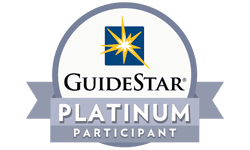How to Remember Everything You Read
Though reading non-fiction may not be the most interesting pastime in the world, the genre can help you discover and learn more about the world around you. However it is often very difficult to actually retain information when you read these books, which defeats the whole purpose of sitting down to actually read them. Whether it be for educational, work, or personal interest reasons, it is crucial to know how to effectively remember information you read. Fortunately there are a few techniques that you can use to accomplish just that.
There are two types of non-fiction books, those that describe very specific facts, usually read for work or academic obligations, and those that teach you about a practical topic, usually read for pleasure. As a result, there are also different methods to retain information from these texts that differ between the two types. One technique to remember specific facts is called pre-reading. Pre-reading involves preparing your brain to pick up the most important information from a body of writing. For example, if you looked through a book’s table of contents, skimmed the chapter, read subheadings, or read a summary or review questions available at the end, you would be able to recognize the chapter’s most important topics. By pre-reading, you will ensure that when you actually read through the chapter, you can easily recognize key points worth memorizing. You will have read the important information twice as well, further ensuring that you will remember it.
Another method of recognizing important information in a nonfiction book is highlighting. As it is well known, highlighting easily helps information stand out, thus it is great for visual learners. However it is important to note that your highlights need to be effective. The more you highlight on a page, the less useful each individual highlight is as you get closer and closer to just highlighting the whole page. In order to highlight effectively, it’s important that you read and understand the body of writing beforehand. Using the first technique, pre-reading, is a great way to recognize what you should highlight in a book.
Taking notes of what you have learned is another amazing technique of retaining information from nonfiction. Even more effective, is reading through a chapter and trying to write down notes about it with the book closed. Doing so will ignite active recall in your brain, a method of efficient studying that practises actually extracting information from your memory instead of passively shoving new information in. Similar to highlighting, it can be difficult to decide what information you should take note of, which again can be helped with pre-reading. Other ideas to keep in mind are to take note of key terms, definitions, and examples of both to help you remember. Instead of taking multiple notes, you can also write a summary of every chapter you read to accomplish the same benefits of information retention.
The most important technique of remembering specific facts in nonfiction is to do some research. By learning from secondary information that relates to the topic you are reading from, you increase the number of neural connections in your brain that center around the topic, thus you will be more likely to remember the information. Even more, learning more about a topic, or gaining secondary information in a fun way (such as watching a movie) can help you increase your interest level in the subject. For example, I’m sure that you have retained more information about your favourite show on Netflix than the last book you studied. The reason why this is generally true is because you are more interested in the show.
Finally, in order to remember practical non-fiction books such as those that help you cook or improve your life, you need to put its tips into use. Again, doing so increases your neural connections and interest in the nonfiction topic. If you read a book about the science of cooking, try to use it to develop your own recipe. Even more important, try to take a break after you read. The best way to learn isn’t to constantly stuff your brain with knowledge, but to let the most important knowledge fully stick.
With the use of these five techniques, your reading of nonfiction will be useful, efficient, and possibly even more pleasurable. Now, the next time you sit down to read a nonfiction text, whether you are obligated to or not, just know that the information might stay in your head forever.










